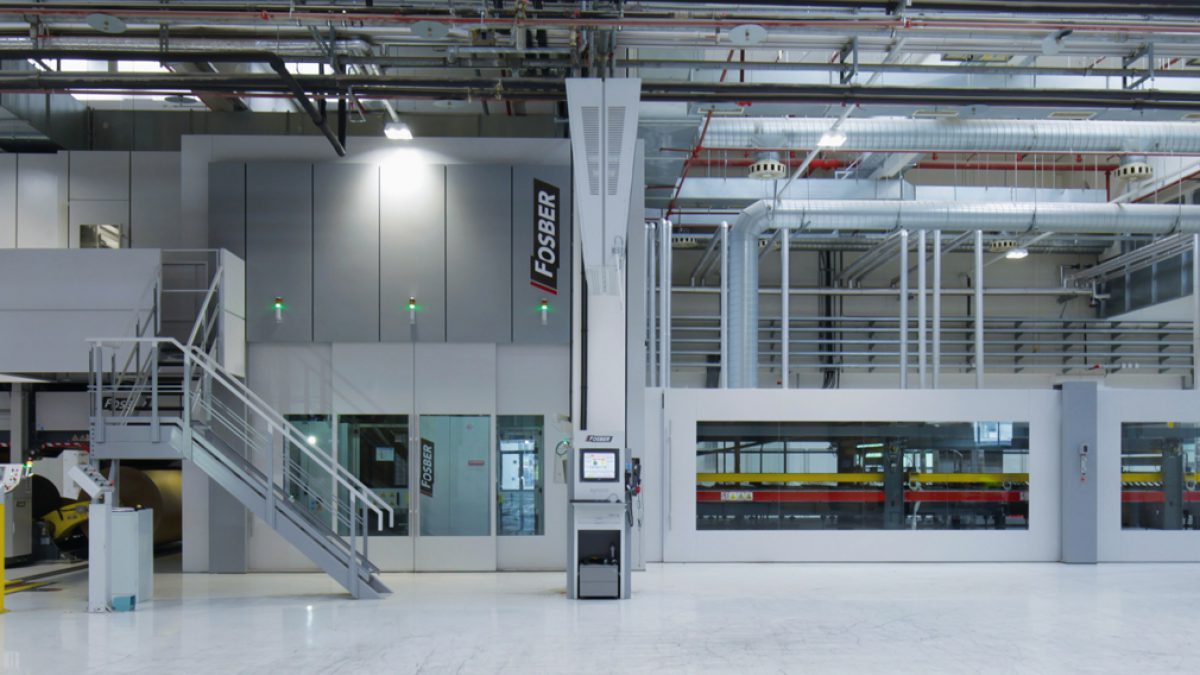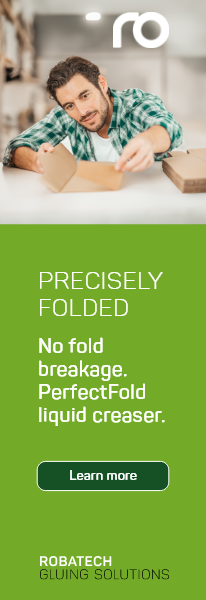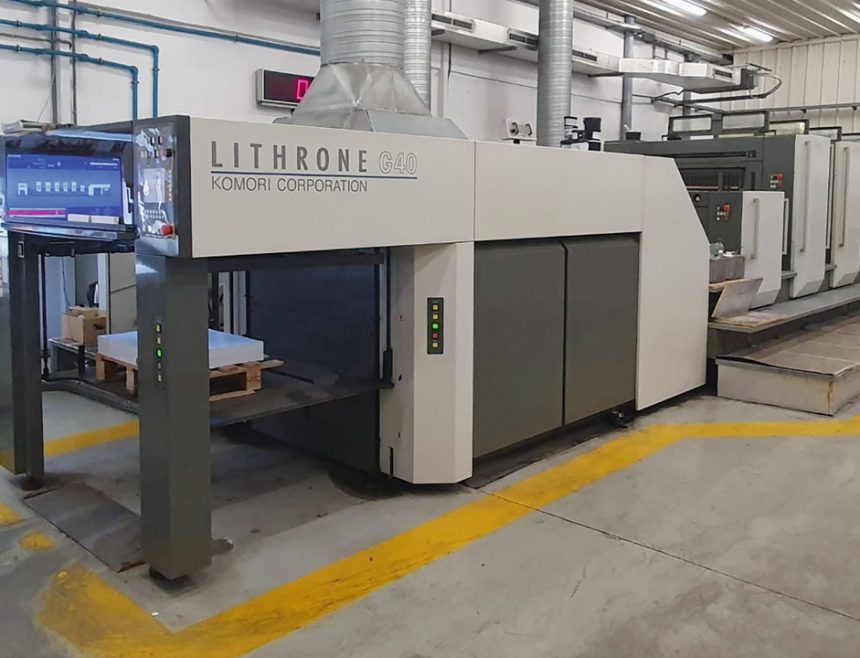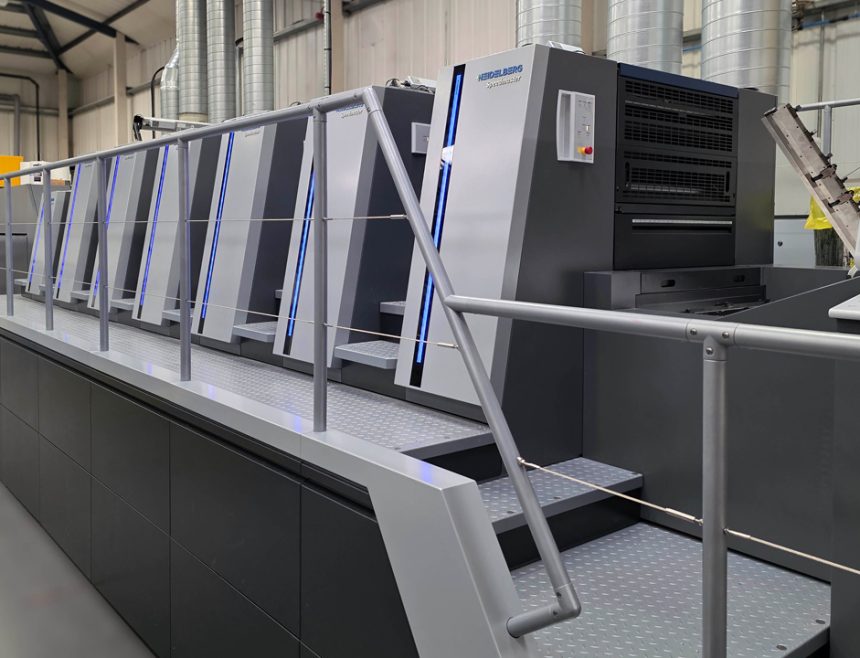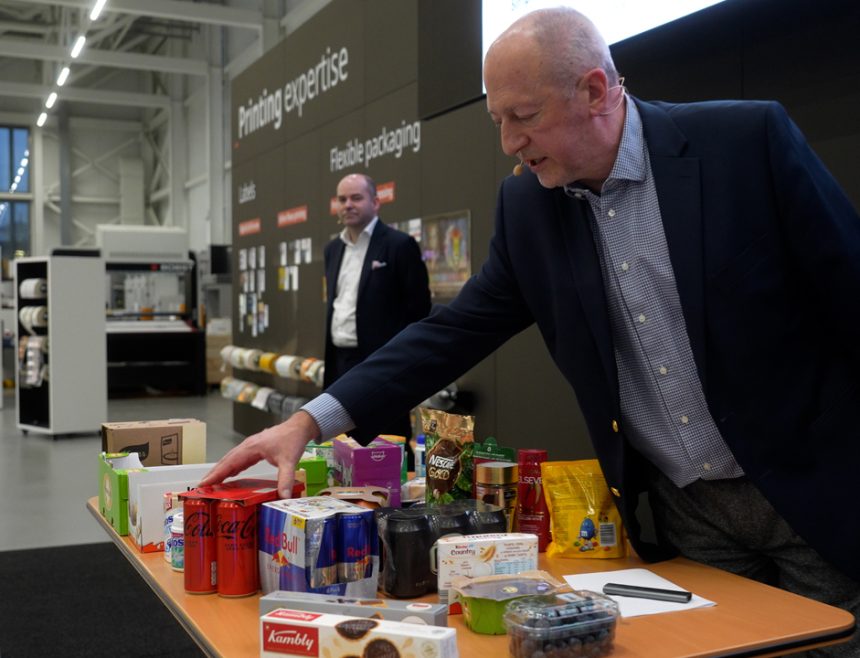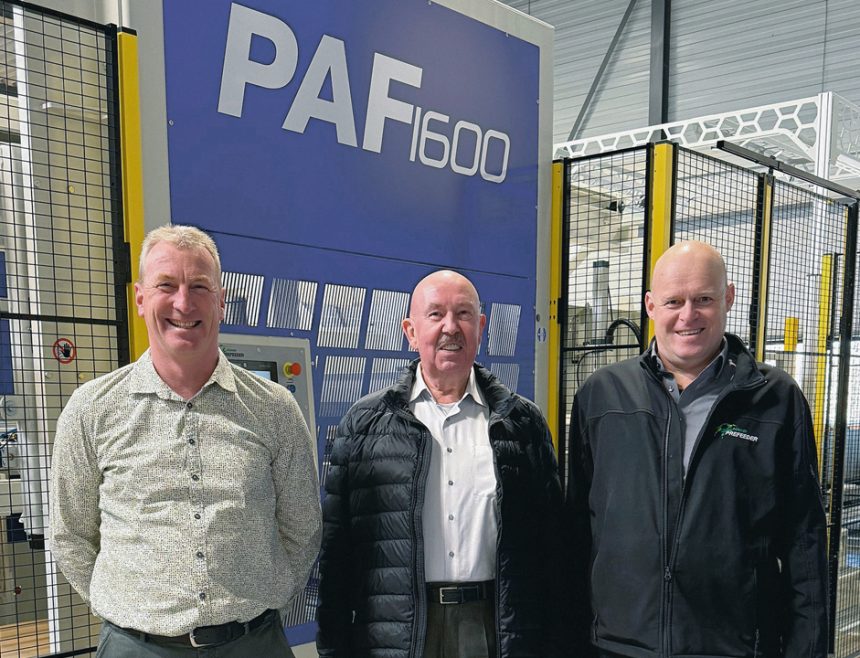Part of the Prinzhorn Group, Dunapack Mosburger operates two corrugated plants in Austria – Vienna and Strasswalchen. Within its corrugated Packaging Business Unit, Dunapack Packaging runs 18 plants in 10 countries, operating no fewer than 16 corrugators. The business unit produces in excess of 2 billion sqm of corrugated board per year, employing some 4,300 people. The Prinzhorn Group employs over 6,300 people in total, generating €1.23 billion in sales and is present in 15 countries.
With its geographic placement, the Packaging Business Unit centres its activities in what many describe as central Europe. “We are focussing our efforts in the evolving central European market – from Germany to the Balkans, from Greece to Turkey,” explains Alexander Enzenberg, Managing Director of Dunapack Packaging. “We are growing alongside our customers, with acquisitions and investments in order to supply state-of-the-art multi colour packaging solutions.” The latest acquisitions in that territory included Viokyt in Greece, which was brought in early 2016 and the Eskisehir plant of Camiş Ambalaj in Turkey, during the first quarter of 2017.
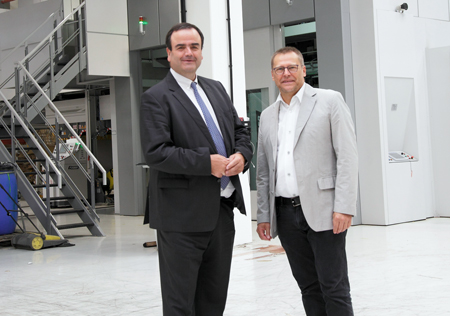
L to R: Alexander Enzenberg with Stefan Nedbal of Fosber.
Vienna plant
Dunapack Mosburger has invested in the Vienna site constantly ever since. In recent years additional warehouse space, a Bobst Masterline, a Martin 924 as well as a Göpfert printing line for increasing the HQP flexo capabilities were installed. But it became clear around five years ago that to really boost production capacity further, a new corrugator to replace the old 2.5m Peters line was necessary.
But there was an issue. The existing site was not big enough to install a new, high speed corrugator and associated materials handling system, so Dunapack started to put a plan together for site expansion. “We knew that we needed more space and we devised a plan. The idea was to acquire the neighbouring factory where we could not only house a new corrugator, but also consolidate the Packaging Division and Prinzhorn Holdings’ offices in the same site,” says Enzenberg.
Once the site was in their ownership, Dunapack Mosburger put together a strongly motivated team of experts supervised by Max Hölbl, the General Manager of the Vienna plant. The new site would be linked to the old factory by way of a sophisticated logistic system. One of the main criteria for the whole project was to generate productivity advantages by automating the processes.
Once the new corrugator was installed, the Peters machine was taken away and re-furbished, prior to installation at Viokyt in Greece. “It was a win-win for us and the Viokty plant, as they now benefit from additional capacity and we freed up significant space for additional materials handling and converting lines,” explains Enzenberg.
The Group invested a little over €30 million in the factory, office renovations, corrugator and materials handling system. But it wasn’t all plain sailing. “The new factory was right on the demarcation line between the residential and industrial zone,” continues Enzenberg. “The previous company assembled electrical components, which generated very little noise. We did get some concerned residents who were worried that the corrugator bay would generate significant amounts of noise, as well as the huge increase in truck activity. It was not an easy period, but we have worked really hard with the residents and authorities to ensure that by moving into the new factory, we would not create any major disturbance.”
When asked if a greenfield site would have been easier, Enzenberg is clear with his answer. “We did look at the idea of greenfield, but when we looked at how many machines we would need to move – especially the high quality post print equipment – we decided it would be easier to opt for the route we originally planned. That way, we would have zero downtime in converting and no loss of supply to customers.”
What machine?
“As a business, we have been active in the corrugated industry a long time, so we have a great deal of internal skills and knowledge when it comes to corrugators,” says Enzenberg. “Obviously, we know the leading players for full line corrugators, so we began the exercise of sitting down with each of them to discuss the project, making it clear that our new factory might give us some issues due to support columns and low ceilings. We knew it was going to be a tough project to get right.”
Fosber embraced the challenge. “After several meetings, it became clear that we had a very similar understanding about the needs of Dunapack and its clients, especially when it comes down to quality and reliability of the machine setup.,” continues Enzenberg. “It is almost like we were having a project discussion, rather than a price negotiation. As a team, we were impressed with the idea-sharing as well as speed of project planning that was shown by Fosber.”
But then came the hard part – Fosber proposed a machine that they had not built before. “They suggested we look at their new concept of high speed, 400m per minute 2.8m corrugator,” Enzenberg explains. “The S/Line 400 is based on their successful S/Line 350 and thanks to a relationship with Fosber that dates back to 2012, we were prepared to take the chance of investing in this new Fosber solution.”
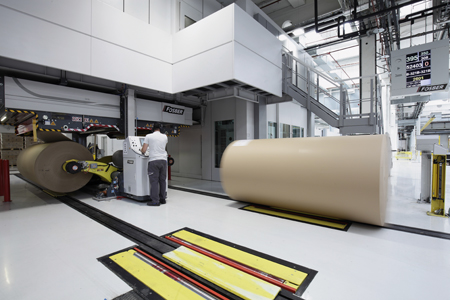
This 400m per minute top-of-the-range production line has been born out of a design evolution of Fosber’s long established S/Line 350m per minute corrugator which has long enjoyed a well respected reputation in the market place, renowned for its simplistic technical solutions, reliability and low cost of ownership. Although the S/Line 350 always had a mechanical designed speed of over 400m per minute, it was always capped to have a top running speed of 350m per minute. The Italian manufacturer says this was a calculated choice with a view to guaranteeing general production and operational considerations.
Fosber’s new S/Line 400 sticks to these same proven principles of functionality and construction that have proved so successful on the S/Line 350. Yet, thanks to the development of a new cut-off knife – the Master 400 – and various design enhancements along the corrugator, plus the introduction of new levels of intelligent automation, the performance level of the new S/Line 400 has now been significantly boosted to run at speeds over 400m per minute without affecting in any way the quality of the finished board.
Once the machine had been specified, so began the task of modifying the new factory for the corrugator and its WIP area. Working with Dücker, a suitable WIP and sophisticated tunnel system were developed to ensure smooth delivery of stacks of corrugated board to the old factory, which now had a lot more space for storage and converting throughput.
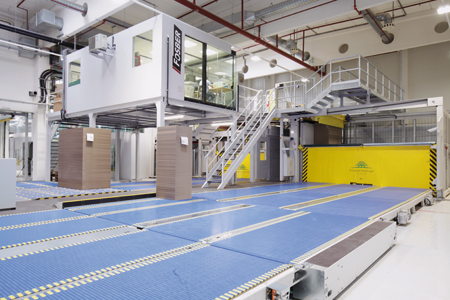
On Track
Start-up of the new machine was during mid-November 2016 and within a matter of weeks, the start-up curve was already proving the decision was the right one for this new machine. “Overall, we were very happy with the start-up,” states Enzenberg. “Sure, it was a bold step opting for a first of a kind machine, but we knew the quality of their equipment would be good. One important aspect was that Fosber now has a dedicated group of German speaking engineers and trainers – this was crucial for our decision making process. Training was and still is critical for the ongoing success of our team and Fosber was well placed to service this in German.”
Enzenberg is quick to point out some key aspects of the project that stood out for him. “Fosber has done some fine work over the last few years, resulting in many innovations. For example, the Pro/Care Pro/Quality system is an excellent tool that we are using effectively, as well as the Automatic Target Speed mode, which means the corrugator is able to increase or decrease speed to ensure it hits pre-defined targets.”

